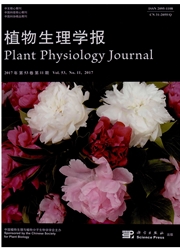

 中文摘要:
中文摘要:
硅是植物体的重要组成部分,尽管硅尚未被列为植物生长的必需元素,但它在促进植物生长发育、提高作物对非生物逆境(干旱、盐分和重金属等)和生物逆境(病虫害)抗性等方面都具有重要作用。硅不仅能改善植株对矿质营养的吸收,提高作物产量和品质,而且能沉积在叶片及叶鞘表皮细胞,形成硅化细胞和角质双硅层结构,增强寄主植物细胞壁的机械强度和稳固性,从而增强植物对真菌侵入和扩展的抵御能力,提高植物对金属离子毒害的抗性、缓解盐胁迫、增强抗高低温和抗紫外线辐射等。本文在植物硅素营养和转运机制研究的基础上,对硅素营养在黄瓜中生长发育、抗逆和吸收转运机制等方面的效应做了相关综述,并展望了黄瓜中硅研究的未来发展。
 英文摘要:
英文摘要:
Silicon is an important part of the plant.Although it has not yet been listed as an essential element for plant growth and development,its beneficial role in promoting crop resistance to abiotic stresses(drought,salinity and heavy metals,etc.),biotic stresses(pests and diseases) and other aspects has been proved.Silicon can not only improve the absorption of mineral nutrients for plants to increase crop yield and quality,but also can be deposited in the epidermal cells of leaves and leaf sheath,by formating silica cells and double silicon layer structure to increase the mechanical strength and stability of the host plant cell wall,thus enhance the capability of defence against fungal invasion and expansion,metal ion toxicity,salinity,chilling and UV radiation.Based on the study of silicon nutrition and its transport mechanism in higher plant,this paper reviews the effect of silicon for cucumber growth and development,resistance and its uptake and transport mechanism.And we prospect the future of silicon study in cucumber.
 同期刊论文项目
同期刊论文项目
 同项目期刊论文
同项目期刊论文
 期刊信息
期刊信息
